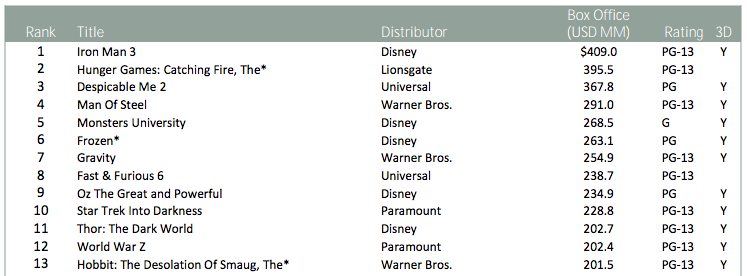The Hollywood Sequel Machine Is Stronger Than Ever
Turning original ideas into hugely successful films is hard. Why risk it?
Last year was the year Hollywood's blockbuster model (i.e.: more money on fewer films that are mostly adaptations) was supposedly defeated by the prodigious failures of The Lone Ranger, After Earth, R.I.P.D., and Enders Game. Funny, then, that the thirteen films grossing more than $200 million in the U.S. and Canada in 2013 were:
- A sequel based on a comic book
- A sequel based on a YA book
- A sequel based on a cartoon
- A sequel based on a comic book
- A sequel based on a cartoon
- An original animated movie!
- An original non-animated movie! (although the main character, space, was animated)
- A sequel of a sequel of a sequel of two other sequels
- A prequel based on a book
- A sequel based on a re-relaunch of a TV show
- A sequel based on a comic book
- A movie based on a book
- A sequel based on a book
In case you couldn’t guess each film by the exhaustively elaborate descriptions I've supplied above, here’s the same list with titles:
These are not movies that audiences are being conscripted to watch. These are the movies they are choosing to watch. If you don’t like Hollywood’s sequel machine, don’t blame Hollywood: Blame the butts in the movie-theater chairs. They have the vote that matters.
Derek Thompson is a staff writer at The Atlantic and the author of the Work in Progress newsletter.
